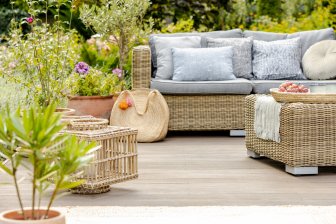There’s nothing like coming home to a beautiful green space, but for those who don’t have green thumbs, the thought of keeping a plant alive when you’re not home can be intimidating.

While there are several plants that are considered high-maintenance and need to be watched daily, some indoor ones can survive even if you forget to water them.
Michael Leach, owner of design and plant shop Dynasty Toronto, says you can start looking for indoor plants anytime of the year, but winter, in particular, is considered a busier season.
“It seems people love to fill their lives with jungle vibes to warm up the dreary time of year.”
READ MORE: 5 of the easiest indoor plants to grow
Adam Mallory, co-founder and plant specialist at Crown Flora Studio in Toronto, says before you enter a plant store, make sure you have an idea of how much light you have.
He adds south-facing windows will expose your plant to quite a bit of natural light, while north-facing windows or spaces offer filtered light.
- Invasive strep: ‘Don’t wait’ to seek care, N.S. woman warns on long road to recovery
- Canadian food banks are on the brink: ‘This is not a sustainable situation’
- Is home ownership only for the rich now? 80% say yes in new poll
- ‘Super lice’ are becoming more resistant to chemical shampoos. What to use instead
“A lot of plants thrive in what we call filtered light. It is softer and more gentle, which can be really good food for some plants.”
READ MORE: Fun ways for kids to help with plant care
These plants are also good for people who get lazy or just forget to water their plants. Mallory suggests putting a reminder on your phone to help get you into a routine.
Leach adds low maintenance plants thrive because of neglect.
“I believe the majority of plant deaths are a result of watering and being overbearing,” he says. “[Some] plants need very little water so over-watering shouldn’t be an issue.”
And as trendy as it may be to own a ton of indoor plants, Mallory says a lot of it has become therapeutic — it forces people to take care of something and keep an eye on it.
Below, both plant experts list their top low maintenance plant choices for spring.
Devil’s ivy
Snake plant
Mallory says these are also called mother-in-law tongue plants and come in several varieties.
“You can put that plant in a dark space and ignore it and it would be perfectly fine.”
He adds experts often treat this plant like a succulent, which means if there is good water drainage, you can leave this plant in any space. He also recommends beginners to start with this one. “It produces a lot more oxygen than a lot of other plants. … A small one can start at $7.” You can water this plant every two to four weeks (depending what the air in your home is like).
READ MORE: Transplanting plants and how to care for them
Leach says this family of plants are also incredibly tolerant of drought and low light levels.
Succulents or cactus
Getting a cactus or succulent as a first choice is also optional, Leach says. They function the same as snake plants, but often need more natural light.
Fiddle leaf fig plant
Mallory considers these medium maintenance plants because you only have to water them well every two weeks. “Once they are down to a good schedule, it will grow.”
The plants come in two forms: bushes where leaves grow all over or trees that have one long, straight stem.
“They’re just beautiful,” he adds. Price really depends on size, but small ones can start at $35 and large ones can go up to $375.
Ponytail palms
Beaucarnea recurvata or ponytail palms are low maintenance and striking in large scale specimens, Leach says. These plants are better in dry soil (water is stored in the trunk) so you can get away with watering them once every three to four weeks, Joy Us Garden notes.










Comments